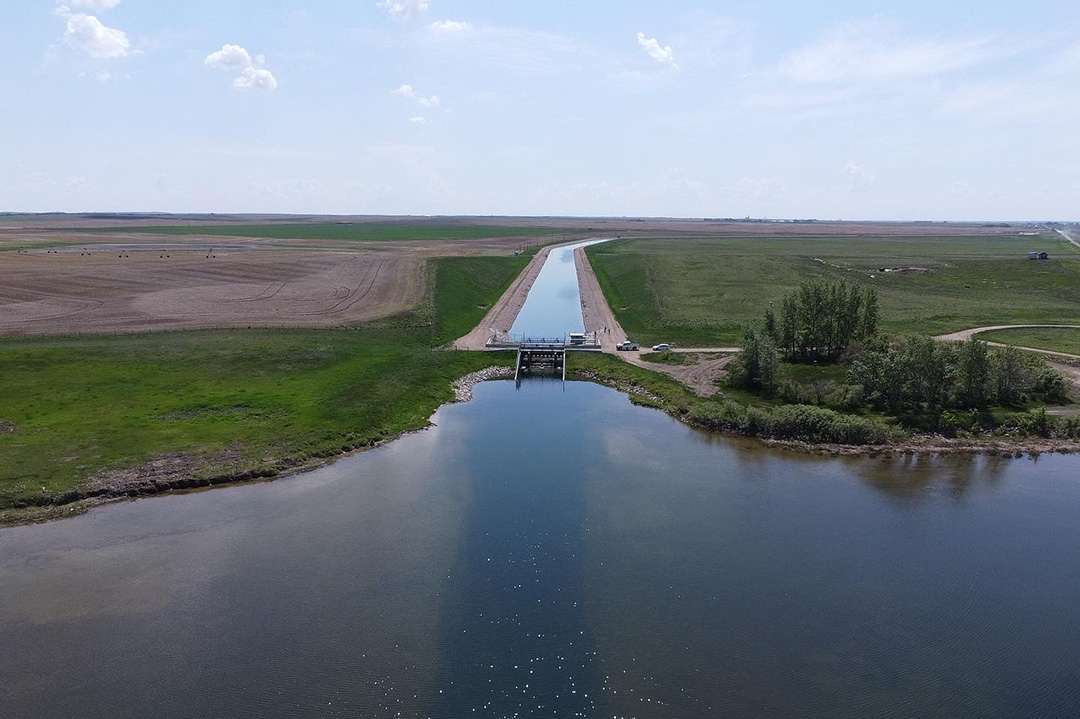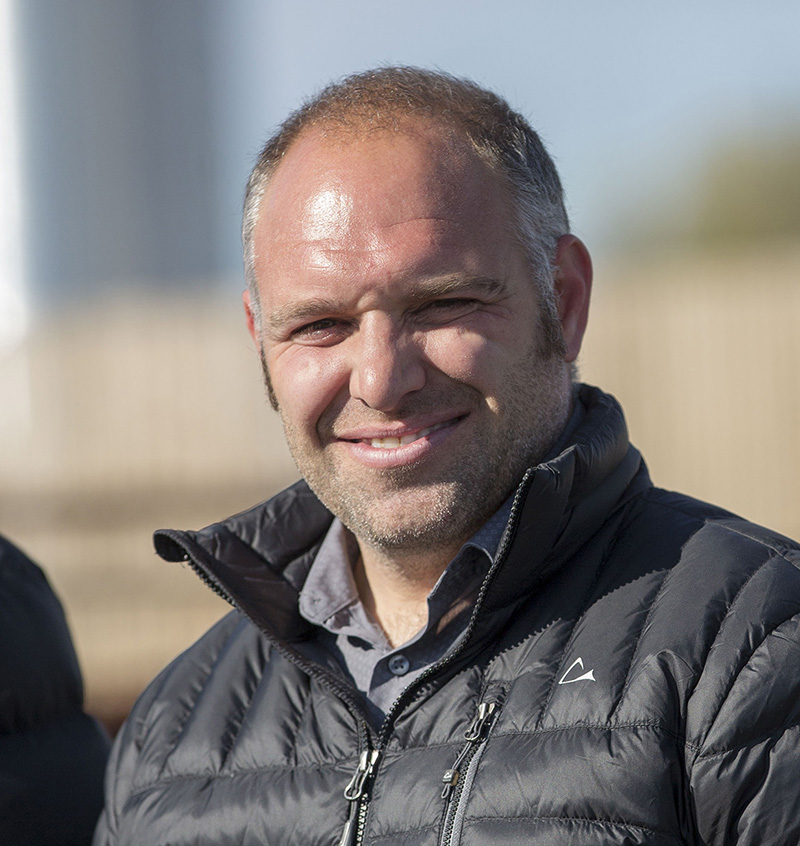
Where water meets the field
As the United Nations prepares to spotlight World Water Day on March 22, irrigation and livestock water quality remain among the leading research topics at the University of Saskatchewan (USask).
By Joanne PaulsonCan you think of anything more important to agriculture than water?
No?
Neither can researchers in the College of Agriculture and Bioresources at the University of Saskatchewan (USask).
Whether it’s growing crops or hydrating livestock, water comes into almost every conversation about food.
Now, new research projects are getting underway to investigate two important elements of water management.
Making the irrigation decision

Irrigation is the focus of a project led by Dr. Patrick Lloyd-Smith (PhD), associate professor in the Department of Agricultural and Resource Economics and a member of the Global Institute for Water Security at USask.
Funding of $200,000 for the three-year project, which will ramp up this summer, comes from the provincial Ministry of Agriculture through the Agriculture Development Fund.
The project is motivated in part by the provincial government’s announcement in 2020 to spend $4 billion on expanding irrigation to capitalize on irrigation potential. The project will focus on guiding agricultural producers through decisions around whether to adopt irrigation while evaluating potential profits and the capital costs of installing a system.
Lloyd-Smith said irrigation is a big decision, not just a crop choice change.
“This is a wholesale transformation of your operation, starting with a big capital outlay,” he said.
For example, going from dryland farming to irrigation expands cropping opportunities, and not just switching from “canola dryland to canola irrigated, but canola dryland to potatoes irrigated or other specialty crops.”
The project will evaluate existing crop choices, with or without irrigation, from data compiled by the Ministry of Agriculture, the Saskatchewan Water Security Agency, and other sources.
Lloyd-Smith and his team will also engage producers through interviews, focus groups and a large-scale survey, to gather information “and also some of the behavioural factors that may influence the decision whether to irrigate or not.”
The research will also look at the policy side, he said.
“What sort of management changes or water allocation rules could be or should be implemented?”
Lloyd-Smith has seen an interest in moving to flexible allocation mechanisms for Saskatchewan.
“As an economist, I’m interested in different water market allocation systems and water pricing systems that can ensure there’s enough water to go around as well as facilitate water being allocated to areas or producers or sectors that value it the highest,” Lloyd-Smith said.
He added that he is “lucky to be working with” Dr. Dionne Pohler (PhD), associate professor at the Edwards School of Business, along with Jillian Brown, a PhD student in the Johnson-Shoyama Graduate School of Public Policy “who has considerable experience in the irrigation industry in the province.”
Also on the irrigation front, the College of AgBio is offering a new micro-credential sustainable irrigation program under its continuing education arm.
The non-credit community-level program introduces learners to the foundational knowledge required for sound decision-making in irrigated agriculture.
Saving livestock from sulfate

Dr. Greg Penner (PhD), a professor in the Department of Animal and Poultry Science, and USask Centennial Enhancement Chair in Ruminant Nutritional Physiology, is starting a new project—the fourth in a series—to evaluate the impact of high-sulfate water on cattle and sheep.
The project was recently funded for $699,000 by the Agriculture Development Fund, the Sustainable Canadian Agricultural Partnership, and the Saskatchewan Cattlemen’s Association.
“In Saskatchewan, we’re very favourable in terms of having lots of water availability,” Penner said.
“The problem is some of that water is not suitable for human consumption and in fact some of it is not suitable for livestock consumption.”
Through a testing program run by Saskatchewan’s Ministry of Agriculture, “we’ve realized that water sulfate is a very major challenge for our livestock producers.”
When cattle drink water with high sulfate concentrations, two major problems can arise.
The first one, which Penner calls chronic, is a depletion of trace minerals in the cattle. In particular, sulfate can drastically reduce the amount of copper in an animal because it binds with the mineral.
Copper is important to reproduction, hoof and hair growth, the immune system and a component in enzymes and antioxidant systems, he said.
The other issue is that microorganisms in the animal’s rumen can convert sulfate into hydrogen sulfide, which can induce polio, a neurological disorder.
“Cattle can lose vision; they start to stargaze or head press. It’s a symptom of the challenges happening in the brain, and if it’s too severe, death can occur,” he said.
“What we’re looking for are the strategies that we can use, not on the acute side but on chronic sulfur exposure, to help cattle maintain adequate trace mineral status.”
It would be preferable, of course, to remove sulfate from the water; but that is difficult.
Filtration is an option, but these systems don’t work in areas where there is no power—such as in pastures far from the farm home quarter—and produce effluent that requires disposal.
Penner is involved with another option now being evaluated in a College of Engineering project led by Dr. Won Jae Chang (PhD) that is looking at passive filtration using various absorbent materials. These are showing promise but must be tested for scale-up and are early in their development.
And so, Penner is seeking to refine farm management tools to minimize risk and optimize the ability of cattle to maintain their trace mineral status. He is also hoping to expand knowledge on this topic for sheep, on which he is not aware of any sulfate research.
“When cattle are consuming high-sulfate water antagonistic effects occur between minerals in water and trace minerals in the diet. In these cases, even though we’re providing a diet that might be expected to meet requirements, sulfate interacts with the minerals and makes them unavailable. What we thought was adequate no longer is.
“I hope I can develop solutions that mean we can turn the page on this.”
Together, we will undertake the research the world needs. We invite you to join by supporting critical research at USask.

